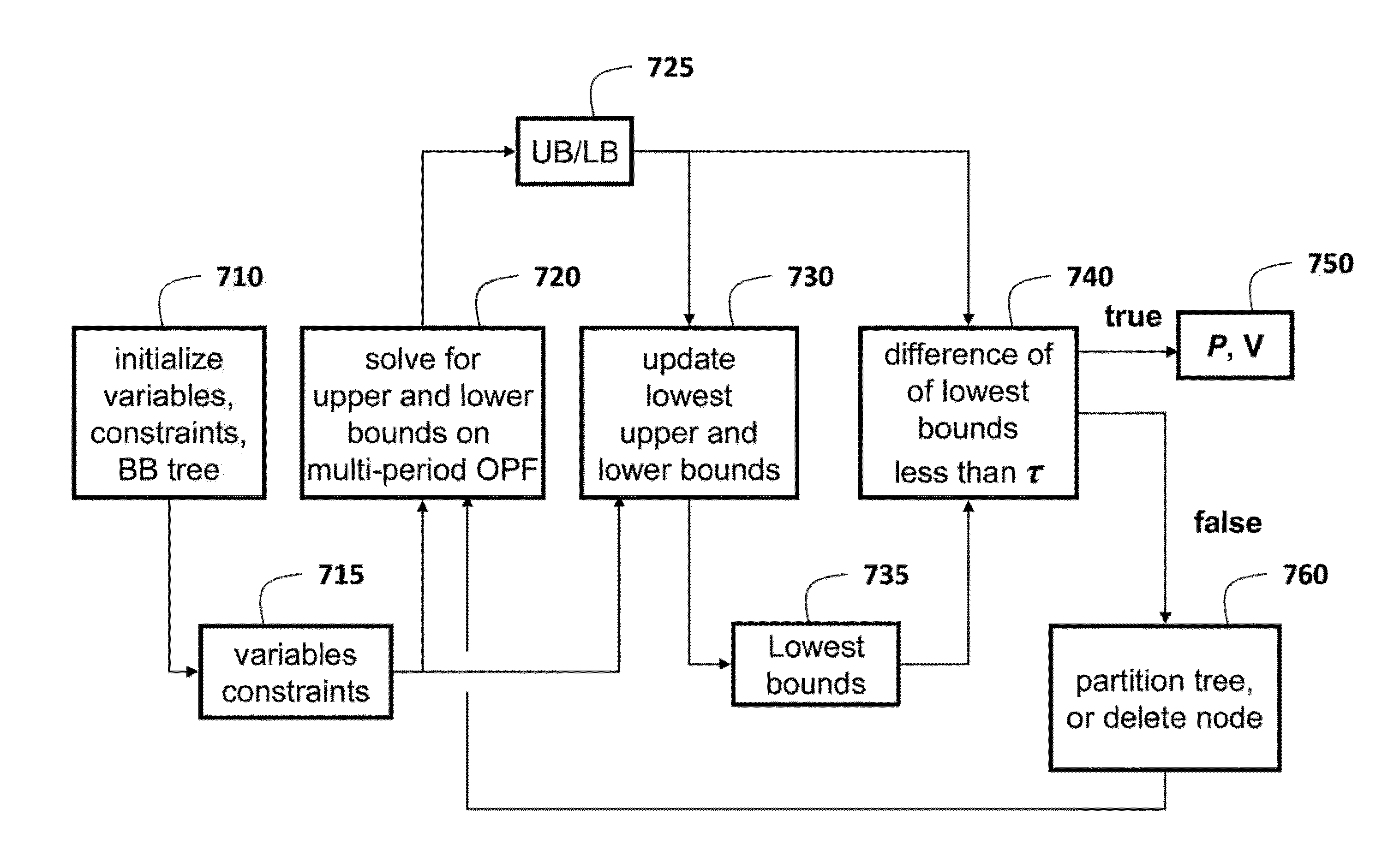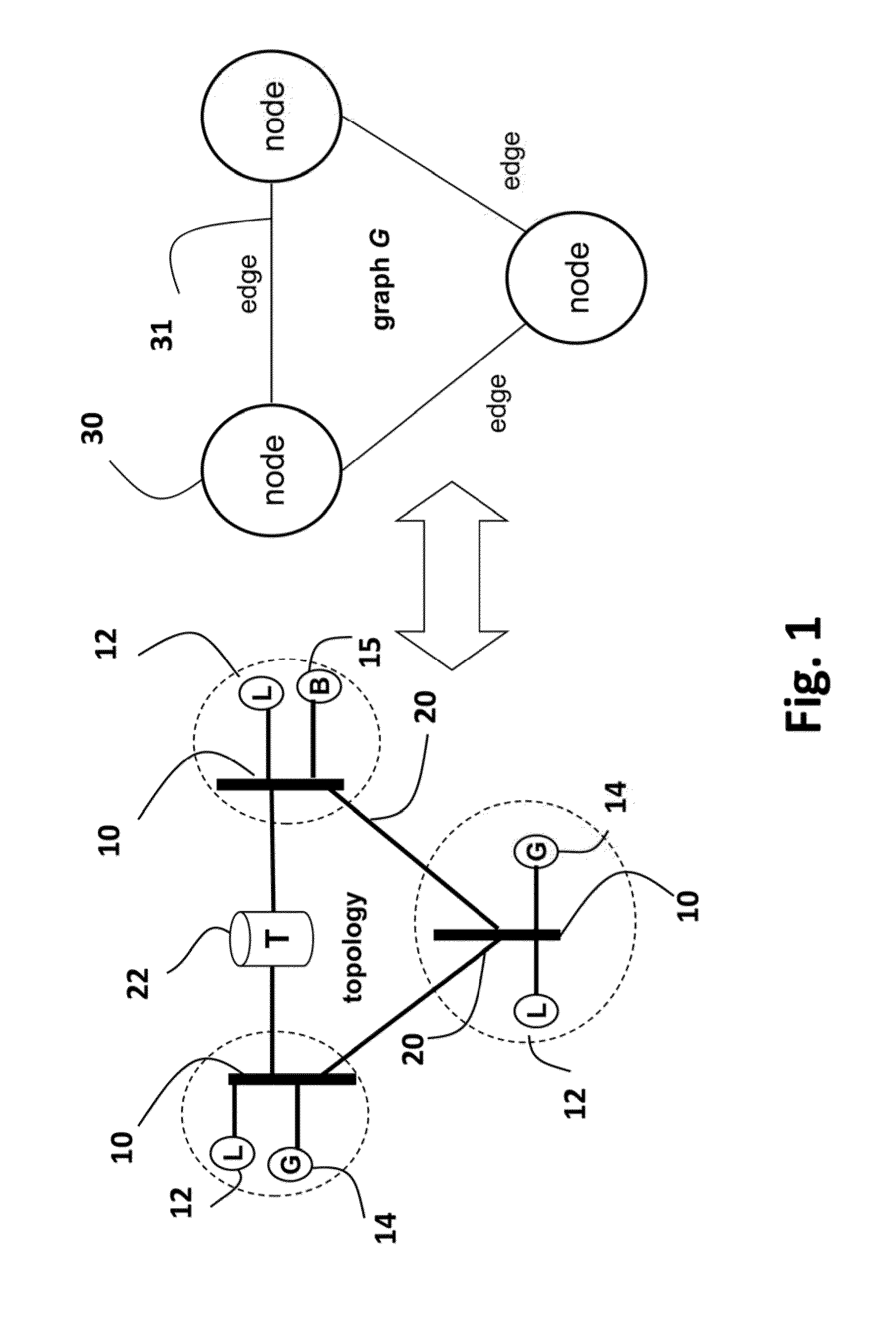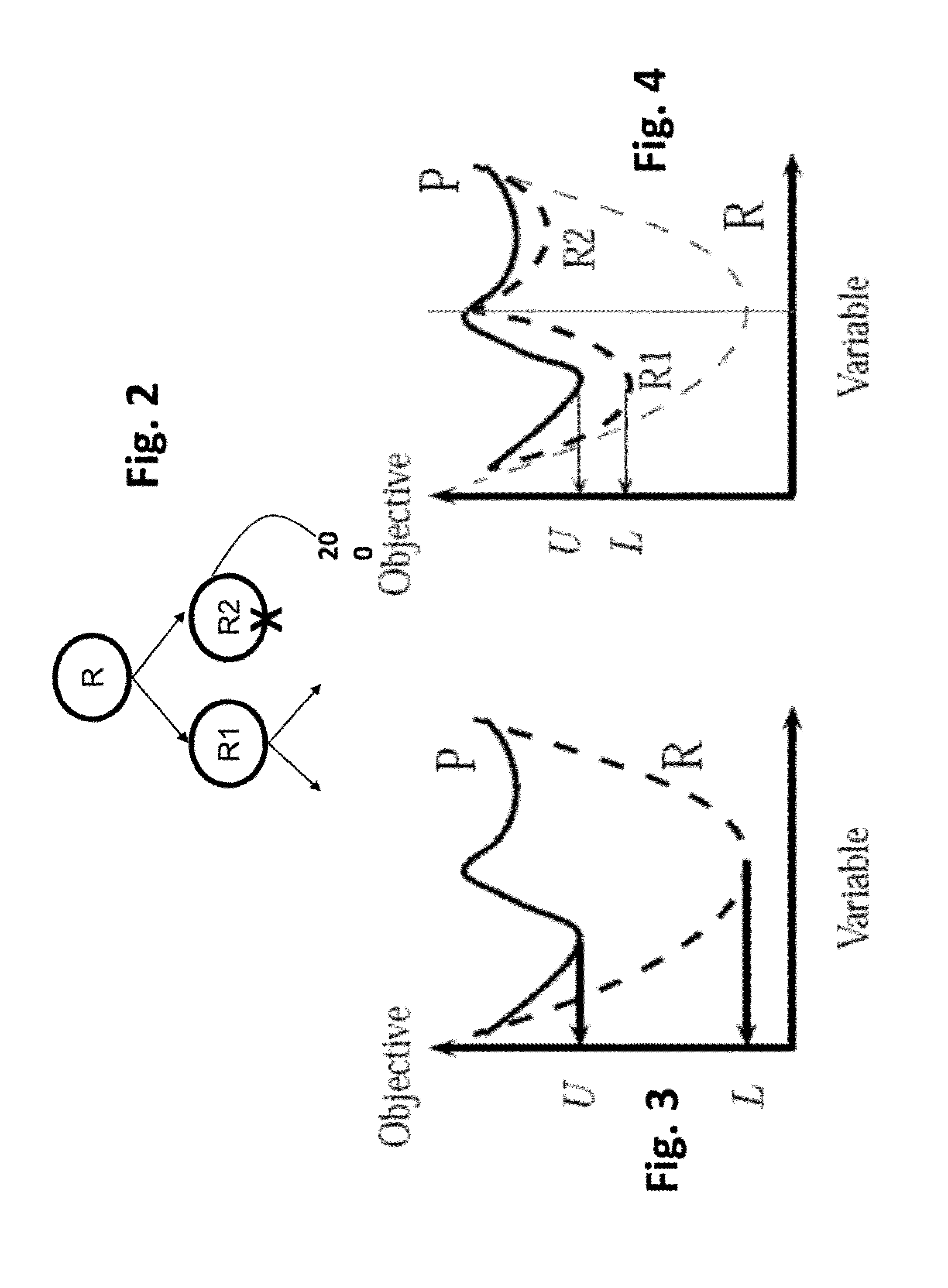Method for Optimizing Power Flows in Electric Power Networks
a technology of power flow and network, applied in non-electric variable control, process and machine control, instruments, etc., can solve problems such as optimizations that cannot guarantee feasible solutions with a global minimum, and assumptions that may not be valid for all networks. the effect of speeding up convergen
- Summary
- Abstract
- Description
- Claims
- Application Information
AI Technical Summary
Benefits of technology
Problems solved by technology
Method used
Image
Examples
Embodiment Construction
Electrical Power Network Topology and Representative Graph
[0026]FIG. 1 shows a topology of an electric power network that can use embodiments of the invention. The network can include AC components, and DC components connected by convertors. The only requirement is that variables and constraints that control the operation of the network are continuously controllable.
[0027]The network includes buses 10 locally connected to loads (L) 12 and generators (G) 14. Additionally, buses are also locally connected to storage devices (B) 15 such as batteries. The buses are interconnected by transmission lines 20. Some of the transmission lines can be connected to transformers (T) 22.
[0028]The generators supply active power (measured in, e.g., Mega Watts (MW)), and reactive power (measured in Mega Volt Ampere Reactive (MVar)). The loads consume the power. The power is defined by voltage magnitude and phase angle.
[0029]The parameters for the optimization include, but are not limited to, an admitt...
PUM
 Login to View More
Login to View More Abstract
Description
Claims
Application Information
 Login to View More
Login to View More - R&D
- Intellectual Property
- Life Sciences
- Materials
- Tech Scout
- Unparalleled Data Quality
- Higher Quality Content
- 60% Fewer Hallucinations
Browse by: Latest US Patents, China's latest patents, Technical Efficacy Thesaurus, Application Domain, Technology Topic, Popular Technical Reports.
© 2025 PatSnap. All rights reserved.Legal|Privacy policy|Modern Slavery Act Transparency Statement|Sitemap|About US| Contact US: help@patsnap.com



